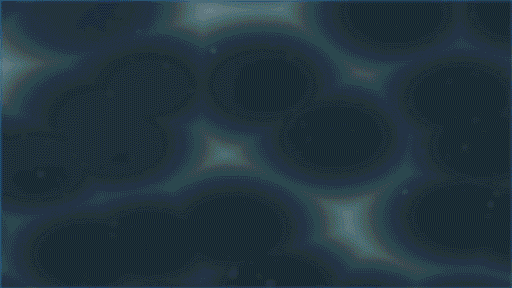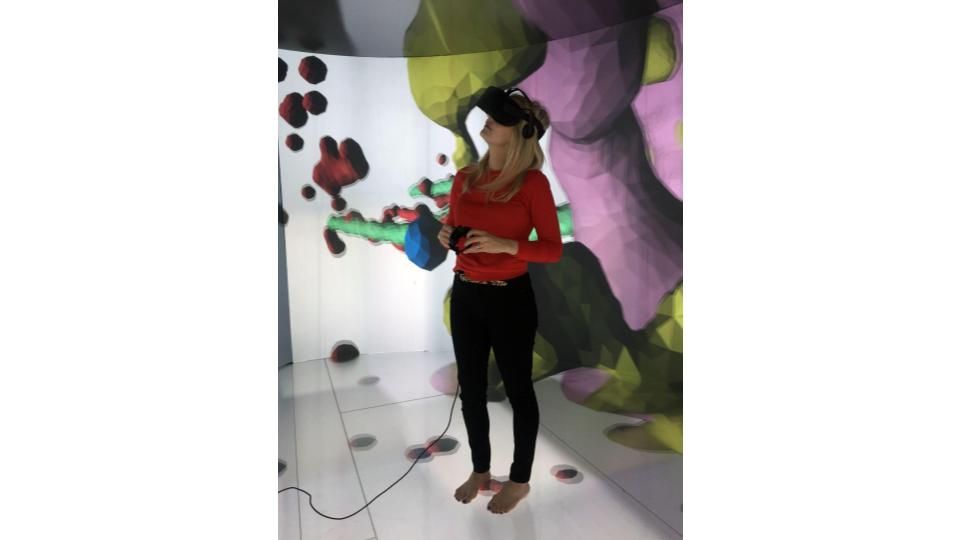Transforming the Stories of Smithsonian Women Scientists into Interactive Classroom Experiences | Smithsonian Voices
:focal(453x219:454x220)/https://tf-cmsv2-smithsonianmag-media.s3.amazonaws.com/filer_public/fd/0c/fd0cd9ec-88e0-4353-91ce-f68612eb6398/tri-sci3.png)
Smithsonian Place of work of Educational Know-how
Have you at any time believed about taking a course field trip as a result of a coral reef? What about adventuring through a rainforest to study animal behaviors? What if you could take your college students by the remnants of an exploded star all from the seats of your own classroom?
Now, electronic learning can take classrooms to new places—from less than the sea to outer place! The Smithsonian’s intent is to boost and diffuse knowledge, not just inside the brick-and-mortar museums in Washington, D.C., but in mastering environments across the globe. Educational establishments, museums, and faculties have to have not be siloed but can collaborate to build an enriching natural environment for learners.
As an intern with the Workplace of the Beneath Secretary for Training (OUSE) this semester, I have had the option to go driving-the-scenes of the “How to Be a Scientist: Smithsonian Women of all ages as Job Role Models” venture, a webinar collection for 4th-8th educators highlighting progressive researchers in just the Smithsonian. Just about every webinar highlighted a dialogue with a scientist, her incredible work, and free of charge interactive classroom-completely ready elements. Educators from all around the globe tuned in for an introduction hosted by Cody Coltharp, the Interactive Designer at OUSE, as he guided attendees as a result of the toolkit of lessons making use of the Smithsonian Finding out Lab—a collection of digital Smithsonian elements that can be customized and shared. The Lab hosts these sources together with an interactive sport, curated lesson strategies, and a biography on a scientist and her exploration. Coltharp describes his inspiration for this sequence simply:
“With all a few of these assignments, a person of the huge factors is the medium. Why do some thing as a video game when it could just as quickly be a fast movie, worksheet, or even a very simple graphic? I noticed Dr. Page talking about her function and I considered: ‘how exciting would a sport be about echolocation? Below is a feeling we don’t have, and we are unable to encounter it in any usual way. How can we use technologies to portray that experience for students?’”
Swim by means of a coral reef and explore maritime everyday living to discover how species are linked by means of the food world wide web and how they count on every other for survival. Smithsonian Office environment of Academic Technological know-how
The initially kit can take participants on an underwater experience discovering the influence of climate improve on the ocean’s coral reefs. Narrated by maritime biologist, Dr. Nancy Knowlton, the former Sant Chair for Maritime Science at the National Museum of Natural Historical past, the recreation allows students to descend into the depths of the ocean and travel by a coral reef understanding about the food items internet, transfer of energy, and the outcomes of coral bleaching—all when having on the perspective of a compact fish. In the Understanding Lab assortment, college students master about coral reefs and mirror deeply about human affect on the setting, employing prompt Project Zero pondering routines.
Dr. Knowlton is the co-chair of the Earth Optimism System Critique Committee for Smithsonian Earth Optimism Conservation Commons, an initiative concentrated on altering the narrative on local climate alter and sustainability. Throughout the are living webinar with Dr. Knowlton, educators were being questioned, “What are means you have struggled to teach local climate alter?” Teachers expressed annoyance in narrowing such a wide subject down to the most essential points, specially with pinpointing where to begin a lesson on the issue. A further challenge in the classroom is emphasizing the student’s purpose in the option with out dampening morale.
Dr. Knowlton stressed the drawbacks of starting a lesson with “everything that is incorrect with the ocean.” In respond to to this obstacle, she suggested foremost conversations or classes with the steps the students can acquire, how many others are contributing, and what can continue on to be finished. Knowlton implies focusing on collective actions that are earning a big difference, alternatively than introducing the lesson with undertones of despair that can lead to a feeling of helplessness.
With a close friend, explore the jungles of Panama as a fringe-lipped bat utilizing echolocation to locate food stuff or a túngara frog chirping to attract a mate. Smithsonian Business office of Academic Technological innovation
The pursuing task kit explores the exploration of behavioral ecologist, Dr. Rachel Website page from the Smithsonian Tropical Investigation Middle in Panama. Her do the job on the romance between the túngara frog and the fringe lipped bat is simply presented in the Learning Lab via functions on adaptation, knowledge and data, and in a two-player game simulating the interaction among the two.
By way of the Gamboa Bat Lab, Dr. Web site and a workforce of behavioral ecologists can conduct exploration and share their results on line from Panama. This useful resource in the toolkit is excellent for educators who explained “using serious everyday living examples and animals put together with up-to-date investigate from Smithsonian researchers and researchers” to dispel generally held misconceptions about pure collection and adaptation in their classrooms.
When questioned to converse on reworking her interest in science into a profession, she spoke to the great importance of reshaping the graphic of a stereotypical scientist and opening a window to alternatives for college students. “[As a child] in my head, I imagined researchers have been these stereotyped Bunson burner, white lab coat [types] extremely a great deal in a laboratory and not in a forest. Surely not seeking to decipher animal interaction signals. It was an eye opener that it could be a occupation path.” Dr. Webpage shared this perception with the Panamanian rainforest noticed and read behind her, a watch that many others could use as a Zoom track record is her reality.
Dr. Kimberly Arcand experiments info collected by the Chandra Space Telescope. The facts is reworked into 3D illustrations or photos to inform the story of an exploded star. SAO, Brown University/E.Jiang
Centered on the analysis of Dr. Kimberly Arcand, a visualization scientist at the Harvard and Smithsonian Heart for Astrophysics, the closing package lets participants to interact in activities on the electromagnetic spectrum and the lifecycle of stars making use of 3D data visualization. In the 360° on the internet interactive, college students are guided by means of the remnants of an exploded star in which invisible radiation has been produced noticeable. By working with the knowledge gathered by telescopes and satellite imagery, Dr. Arcand led a workforce that made a 3D visualization of the things dispersed by the star, reworking that details into an knowledge that can be noticed and manipulated.
Why ought to a student treatment about an exploding star? Throughout the stay webinar, Dr. Arcand answered, “The chemical emissions—the iron, silicon, sulpher, and neon. Our overall body has all those same features in it. We also most likely came from individuals stars that exploded a extensive time ago. Basically, the iron in our blood can come from these stars that exploded eons previous. It is beneficial to converse about relevancy because you want your pupils to care about these matters or to figure out for them selves if they really should treatment.” Lessons on supernovae and blackholes do not have to be unrelatable. By knowing their place in the universe, college students can hook up to subject areas that might feel out of this earth.
As a graduate college student in George Washington University’s Museum Education and learning System, my original knowledge of museum training was that museums are repositories of data and my role as a museum educator was to relay that facts to learners in an progressive but stationary way. I have witnessed museums having advantage of know-how to remodel studying into prospects that are available throughout the globe. How else could a college student working experience the within of a supernova? Or swim by means of a coral reef ecosystem from the viewpoint of a modest fish? Or even encounter what possessing the perception echolocation is like?
As a museum educator, these resources make it possible for me to share impactful tales and methods that encourage learners to try for a additional varied and equitable long term. Jobs these kinds of as the “How to Be a Scientist” sequence do additional than supply a highway of data from Smithsonian museums, sources, and investigation centers to lecture rooms. These initiatives intention to go earlier the impression of what a feminine scientist can do, what they really should search like, and advertise recognition and diversity of job paths for long term experts.






